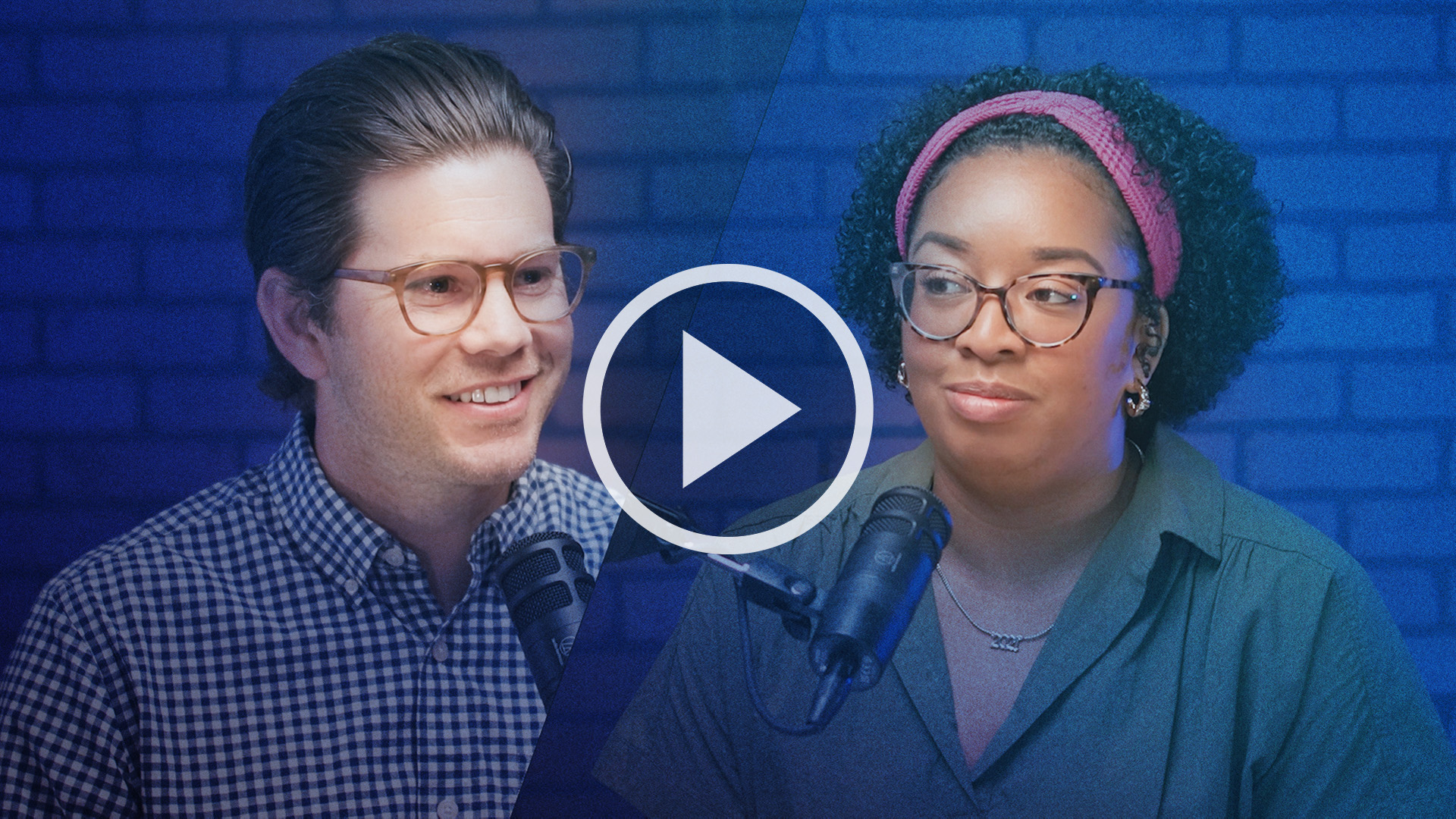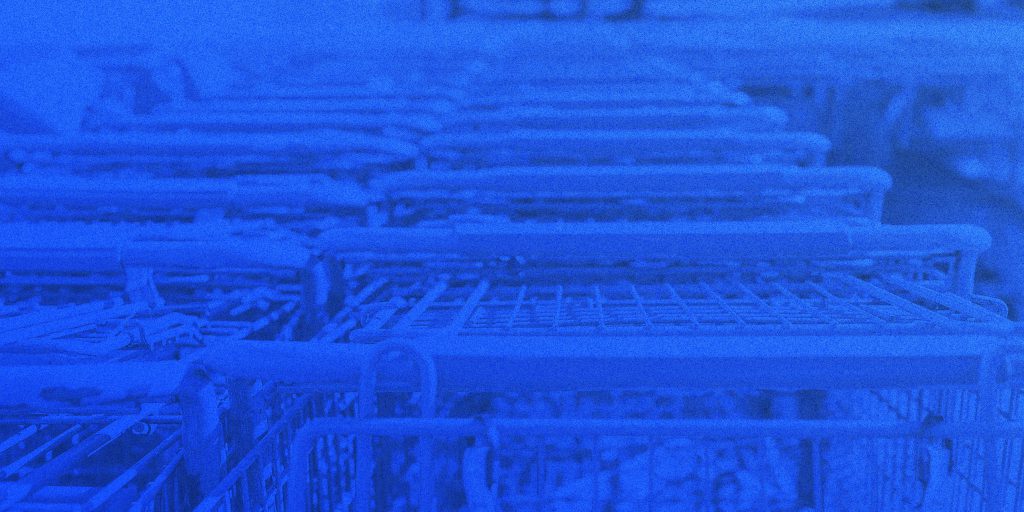In episode 8 of Retail Oriented, Mike reunites with former Sales Factory colleague and current BBDO marketing strategist Varne’t Hoskins. Hear what she has to say about brand from the retailer’s perspective, and what businesses need to know about communicating value to the retailer’s audience.

Transcript
Varne’t Hoskins (00:00):
I think one thing about the home improvement space for DIYers, especially millennial DIYers Yeah. Is that it could be very intimidating. Mm. So is your brand approachable to the DIYer who may not just naturally have the ability to fix things up, but know that they have to get it done? I think that’s super important to know your audience Yeah. And show that you know their skill level or you’re not putting things in their faces that are gonna be compromising or that are going to be intimidating.
Mike Fowler (00:37):
Welcome back to retail oriented retail fans. I am your host, Mike Fowler. I am the VP of Retail Strategy here at the Sales Factory and today we are really lucky ’cause we’ve got a special guest, a special guest that was a former colleague, uh, at Sales Factory and now is a strategist at BBDO, Atlanta Varne’t. Hoskins, welcome to the show. Thank you so much for joining us. How are you doing today?
Varne’t Hoskins (01:02):
Yes, I’m doing good. It’s good to see some familiar faces.
Mike Fowler (01:05):
Yeah. Back in your old stomping grounds. Yes. So we like having you back.
Varne’t Hoskins (01:09):
Thanks for having me.
Mike Fowler (01:10):
Let’s kind of set the stage a little bit for all the viewers and the listeners out there and tell us a little bit about your background first with Sales Factory and then making the move to B B D O Atlanta. Tell us a little bit about how you got to here today. Okay.
Varne’t Hoskins (01:25):
So I actually started as an account executive at Sales Factory back in 2018. Um, actually worked on the Primo account, that was my first account here. Um, and then a few years later I moved on to sales strategist and I got a chance to work with you, um, on that side of the business. And back in 2022, which is only last year, it feels like five years ago, <laugh>, um, actually transitioned into a strategist position over at B B D O Atlanta. Um, so I’ve been able to work in the advertising space for a while now. I’ve learned a lot. I’ve been able to take my experiences with me from Sales Factory. Yeah. Super invaluable.
Mike Fowler (02:10):
You’ve been around retail, you’ve been around brands for a number of years now. Mm-hmm. <affirmative>, you’ve seen it a lot from the agency side of things. How have those experiences at Sales Factory and now B B D O kind of complimented each other to help you learn about what this space is looking like?
Varne’t Hoskins (02:27):
Yeah, so if you all have been paying attention <laugh>, you will know that Sales Factory does a lot with vendors and teaching them how to excel and grow in retail mm-hmm. <affirmative>. And so just now being on the retail side of things, I’ve just done a 180 in terms of my perspective and I think at the end of the day it’s always about the end consumer. Um, but it’s how do you get to that end consumer? And I think at Sales Factory, you all have the privilege to be able to coach and guide these vendors on how to speak to the retailers, how to engage with them, like reminding them that, Hey, we know who your end user is and we have the resources and the products that you need to reach them. So I think just going from that to the retail side of things, it’s like, Hey, we are the retailer. We have these brands that you as a consumer love, and if you don’t love them, we’ll make you love them <laugh>. Um, and that we have what you need in this crazy world and economy to get to your end needs. So yeah.
Mike Fowler (03:31):
Yeah. That’s awesome. You kind of touched on a theme that we’ve touched on a lot in this show, and it’s beginning kind of with the consumer and the end user in mind and that really interesting relationship of vendors and retailers to kind of partner together to understand the needs of the consumer and the end user and get them what they need. So you, you mentioned it also that we have a lot of, uh, manufacturers and vendors that are, uh, clients at the sales factory and also probably listening to this show to try to glean little bits of knowledge about retail channel and how they can improve their retail business. So let’s talk a little bit about what does it mean to know your retailer’s brand if you’re a a manufacturer out there? What does it mean to really understand your retailer and what they’re trying to accomplish?
Varne’t Hoskins (04:22):
Yeah. I think it’s about how, how is that retailer communicating unique value in the, in the category. So, um, you have, we’ll call ’em the blue guys and the orange guys here.
Mike Fowler (04:36):
Okay. I like that. <laugh>
Varne’t Hoskins (04:37):
One of them is gonna communicate value in a different way than their competition. Um, it’s not always about the products that are on the shelves, but how are they positioning the products? What about the retailer specifically? Are they really communicating to the end user? Is it, hey, we have the knowledgeable associates, or Hey, we have the lowest prices. How are you paying attention to how the retailers are communicating value? Mm-hmm. <affirmative>, I think that’s super important.
Mike Fowler (05:09):
What are some ways that they can, can deepen that understanding? Right? So they’re paying attention, they’re kind of watching and they understand mm-hmm. <affirmative>, big picture, you know, the differences maybe between retailers, whether it’s online or in store mm-hmm. <affirmative> value driven or pro driven or whatever the, the differences are. How do they go about deepening that understanding and learning more about these retailers? Are there things that they should be kind of paying attention to? Yeah,
Varne’t Hoskins (05:36):
I definitely think so. I think the biggest one is just listening. Are you actually paying attention to the earnings calls? What are they saying? The all of that stuff is free knowledge. Yeah. So a are you as a merchant paying attention? Are you distilling that information down to the teams that need to hear it? Mm-hmm. <affirmative>, are you paying attention and walking, doing store walks? When you’re doing store walks, what are you paying attention to? Um, how often are you doing those store walks? Like the categories that your products are in? Yes, they evolve, but what about the categories that compliment your categories? Um, I feel like there’s so many different innovative ways to like deepen your understanding.
Mike Fowler (06:18):
I think that’s perfect. Listening, paying attention, doing store walks. Mm-hmm. <affirmative>. ’cause when you, when you walk into a store, it, it might be a little bit different now with technology because you can look at what’s online and get a sense of what’s online, but walking into the store and feeling it and looking at how the products are presented and what’s next to your product, what’s on the end cap, what’s on the feature table. Those are all important things that you’re not going to get from listening to an earnings call or reading an article online or reading a blog post or something like that. So that’s really interesting. What do you think, when you’re looking at kind of, uh, building this deep understanding and you’re, you’re, you’re thinking about it from the perspective of a manufacturer mm-hmm. <affirmative>, is there such a thing as too deep? Can you go too far with your understanding? Can you, can you understand your retailer too much? What do you think about that?
Varne’t Hoskins (07:13):
Yeah, I think that’s definitely a thing. I mean, it’s like analysis paralysis at that point. Like you, you know so much about what they’re doing, but it’s like you’re not even, you’re not even making, um, headway with any of the knowledge that you’re gaining. I think one thing about the home improvement space for DIYers, especially millennial DIYers Yeah. Is that it could be very intimidating. Mm. So is your brand approachable to the DIYer who may not just naturally have the ability to fix things up, but know that they have to get it done? I think that’s super important to know your audience Yeah. And show that you know their skill level or you’re not putting things in their faces that are gonna be compromising or that are going to be intimidating. So yeah, there is a such thing as going overboard. I think it’s a delicate balance of, okay, we know our brand, we know our consumers, we know what they like, we know their habits, but it’s not okay to just keep putting things in their faces, that one they don’t need, but that are also compromising to their skill level. So I think it’s just, you know, finding that, that balance.
Mike Fowler (08:24):
Yeah. And that’s hard to do, right? I mean, that’s not, it’s not easy. And I think that’s where the art and the science comes into, right? So if you think about, you know, we’ve got a lot of, a lot of our clients and a lot of people that we work with that will look at data and they’ll dive deep into data. Mm-hmm. <affirmative>, but sometimes the data doesn’t tell you the whole story. So you, you kind of need to get into the store and, and be where the, be where the, the products are and kind of feel it. What do you, what do you, what do you think about that? That kind of that dynamic between data and, and, and, and being in the store.
Varne’t Hoskins (08:56):
Yeah, it’s like, it’s like a healthy balance. I, I think data is super important because it’s like you don’t want to be too subjective with how you’re doing things. Um, and it’s also about, you know, once you gain this data, how are you, what are you doing with it? How are you interpreting the data? So you have to think about that too. You don’t just get data and be like, okay, I know everything. Like no, you get data, you interpret the data, you distill it down to the teams that need to hear it. Um, and then also you go and walk in the stores and you can, you can see if what you’re interpreting from the data is actually true when you go and look and you’re like, okay, this doesn’t make sense. We need to adjust this.
Mike Fowler (09:32):
Yeah. So, so let’s, let’s talk a little bit about that ’cause, ’cause that’s really interesting. How do you know, I mean, how do you know when you’re, you’re interpreting data, you’re, you’re getting data from all different types of sources and, and you’re trying to, to make sense of it? How do you know when you’re, you’re overthinking it or, or, or maybe you’re not thinking about it enough? What do you, what do you think about that? That’s a tough one.
Varne’t Hoskins (09:53):
It is. It is. I, I really think it’s about testing. I think you have to think about, okay, this is a concept that we’re putting together. Um, does this make sense for our brand? Does this make sense for our consumers? Um, what would our consumers think about this? And you, you almost have to kind of do some pre-research before you really put it out there. And, and pre-research could be something like just some qualitative conversations, like some one-on-one conversations with your consumers to make sure that the, the thought process that you’re thinking of makes sense and resonates with them.
Mike Fowler (10:26):
Yeah. And that’s, that’s, that’s hard to do, right? ’cause, ’cause it’s easy to sit in a room and think, Oh, I, I know exactly what the consumer wants. Mm-hmm. <affirmative>, I know exactly what they’re thinking. But, but that’s not always the case. And, and sometimes, you know, you’re, you’re so close to it that you, you might be a little bit biased in terms of what you think they, they might be wanting, right?
Varne’t Hoskins (10:46):
Yeah. And it’s, and it’s okay to like, you know, have a hypothesis, but it’s also okay for that hypothesis to be wrong and it’s also okay to like, adjust your thought process. So I think that’s what, I mean, it’s, it’s part of the journey of, of developing, you know, products and, and initiatives for your brand. So I think you just have to be okay with not, not always being right.
Mike Fowler (11:09):
Yeah. So, so kind of going off of that, um, in terms of, you know, deepening your understanding, getting, getting the right information, understanding the retailer, uh, what are some, you know, maybe two or three key pieces of information that every manufacturer should know about their retailer, and should be, you know, kind of on their, on their radar, you know, on a regular basis?
Varne’t Hoskins (11:32):
I think the first thing is what is the retailer’s competitive advantage? What are they communicating to the end user? So are they saying, hey, we have the lowest price, or are they saying, hey, we have the highest quality products? I think that’s, that’s very important to know. Um, the other thing is, um, how are they executing your products on the shelf? So are they, is it just a big sea of orange, for example, or a big sea of blue? Or is it, you know, are they, are they communicating value in a certain way? Are they breaking up the shop in a certain way? I think that’s, that’s very important. Um, and then I also think, um, knowing your brand’s role in the category, so that’s, that’s really like the, the third point. So, um, if you’re, for example, let’s take, let’s take fans, right? If, if you’re a fan company and you’re competing against other fan companies, what, what role do you play in the fan category? Are you the most, um, do you have the highest quality fan? Do you have the best prices? Do you have the best assortment? Um, so what is, what, what do you want to be known for? So I think that’s, that’s another thing.
Mike Fowler (12:45):
Yeah. That’s, that’s, that’s really good. Those are three really, really good, uh, pieces of information. So, um, I want to kind of pivot a little bit and talk about some of the things that you’re, you’re seeing in the industry right now. Mm-hmm. <affirmative>, you know, you’ve, you’ve been, you’ve been around, you’ve seen a lot of things. Um, what are, what are some of the, the, the trends or things that you’re seeing in the industry that manufacturers and, and retailers should be paying attention to?
Varne’t Hoskins (13:09):
Yeah. Um, so I definitely think right now, um, especially in the millennial space, DIYing is, is, is very big, um, especially after, you know, all of us were quarantined, uh, last year and a lot of, you know, home improvement was, was, was happening. Um, I, I think DIYing is, is, is really big. Um, and I think another thing is um, sustainability. So I know a lot of, um, even home improvement retailers, um, are, are, are thinking about, okay, how can we create products or, or curate products for consumers who care about the environment and care about sustainable products? So I think that’s, that’s another big thing. Um, another thing I think is, um, experiential retail. So I know with, with Amazon and, and, and different, uh, ways of shopping that, that are popping up, it’s like, how do we make sure that, um, we’re, we’re getting consumers in the doors? So, um, I think what Lowe’s has done with, um, you know, having that collaboration with, um, with with paint companies and how you can, um, get, uh, get, um, colors for your paint, you know, and just be able to, to actually experience what that, that color would look like in your home. I think that’s, that’s, that’s very big as well.
Mike Fowler (14:38):
Yeah. That’s, that’s, that’s really, really interesting. And I think you’re seeing a lot of, of companies do that, right? Like, it’s not just, uh, you know, you, you mentioned Lowe’s, but there’s a lot of companies that are, are really trying to create these experiences, right? Because I think there’s a, there’s a level of experience that you can get when you go into a store that you can’t get online, right? And, and there’s, there’s some retailers and some companies that do a really good job of, of, of creating that experience. And there’s some that maybe don’t do as well. How, how do you think about that in terms of, you know, creating an experience? ‘Cause that, that can be a little bit daunting, right? If you’re, if you’re a manufacturer and you’re thinking, okay, I’m not a retailer, but I need to create this experience. How, how do you even start to think about that? That’s hard.
Varne’t Hoskins (15:17):
It is hard. I think the first thing is, is thinking about, um, okay, what do our consumers care about? What’s gonna resonate with our consumers? So I think that’s the first thing. Um, and the second thing is, okay, how do we, how do we differentiate ourselves from our competitors? So is it something that we’re going to provide in store that nobody else is providing? Um, and then I think the third thing is, um, how, how can we make, um, this, this experience memorable for the consumers? So, um, you know, what, what are some ways that we can make sure that when they leave the store, they’re going to remember our brand? So whether that is a, a paint color, or whether that is, um, a unique way to display something in the store, um, I think, I think those are the three ways that I would, I would start with in terms of thinking about, you know, experiential retail.
Mike Fowler (16:07):
Yeah. Those are, those are, those are great. Um, so, so I want to, I want to kind of wrap up here and, and, uh, and kind of leave you with, with, with a final question, um, which is, you know, if, if you think about, you know, all the things that you’ve learned over the past couple of years, um, and, and all the things that you’ve been doing, what, what’s, what’s one piece of advice that you would give, you know, whether it’s a manufacturer, retailer, someone in the industry, someone who’s just getting started, um, you know, based on your experience and what you’ve learned?
Varne’t Hoskins (16:37):
Yeah. I think the biggest thing is to not be afraid of change. Um, the world is always changing, technology is always changing. Um, and the second thing is I think you have to get comfortable with ambiguity. Um, especially in this world and especially in the marketing world, things aren’t always black and white. Um, and I think the third thing is, um, if you don’t know something, it’s okay to ask. It’s okay to get clarity. Um, I think a lot of times, especially when we’re in a, in a professional setting, we think, oh, we, we should know, we should know it all. But, you know, if, if you, if you’re not sure about something, it’s okay to get clarity on it. ‘Cause I think, you know, as, as we, as we’re moving up in our careers, it’s, it’s all about, you know, adding, um, you know, new skillsets and, um, and, and getting, getting better at, at what we’re doing. So I think those are the three things I would say.
Mike Fowler (17:29):
That’s really good. That’s really, really good advice. Um, well, Varne’t, thank you so much for joining us. Uh, it was a pleasure having you. It was great to see you. It’s been awhile since we’ve, we’ve talked and, and, and, uh, we really appreciate you taking the time. Thank you so much for joining us. It was great having you on the show.
Varne’t Hoskins (17:44):
Thanks for having me. It was great to be here.
Mike Fowler (17:46):
Awesome. Well, thank you to all of our listeners and viewers for tuning in to this episode of Retail Oriented. Uh, we really appreciate it. Uh, if you haven’t already, make sure you subscribe, make sure you share, make sure you like, uh, make sure you, you comment, let us know what you think. And, uh, we’ll see you on the next episode of Retail Oriented. Thanks again.
Varne’t Hoskins (18:01):
Bye.



